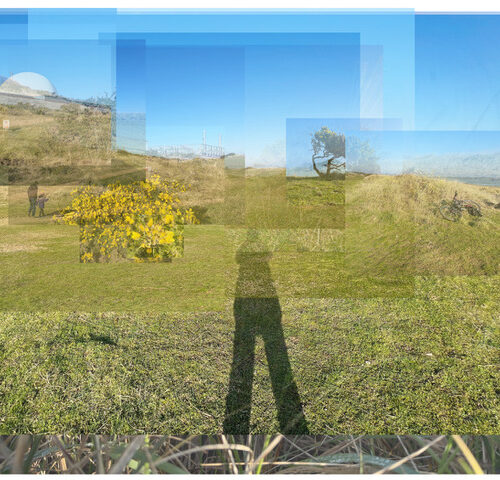
Looking at adverts: 17

In The Arcades Project Walter Benjamin writes that if I follow fashion I achieve ‘the biological rigor mortis of eternal youth’ (quoted in Susan Buck-Morss, The Dialectics of Seeing, p. 99). He says the endless cycle of styles and trends enables the consumer to believe the body isn’t ageing because the constantly changing surface is a distraction from the evidence of ageing.
Benjamin was critical of the ‘rigor mortis of eternal youth’, but in contemporary consumer society it is preferable to ageing. This is expressed in adverts, magazines, and television programmes, which demand that signs of ageing should be prevented. Age-defying cosmetics and makeover programmes using surgery, make-up, and clothing to make the participants look Ten Years Younger imply that consuming commodities will allow the consumer to turn back time, suggesting that old age can be prevented.
I have chosen to look at anti-ageing commodity adverts in this blog because they frequently combine science with nature and myth in a fascinating way.

The adverts for The Body Shop’s Drops of Youth range manage to combine all three. While boasting to contain ‘a few drops’ of the fountain of youth, the products also contain stem cells extracted from marine plants. The products are simultaneously mythical, natural, and at the cutting edge of scientific research.
Judith Williamson writes that science, such as diagrams of cross sections of skin or cell structures, is included in adverts to give the impression that the advert is informative without actually providing the viewer with any knowledge. She says that ‘only forms of knowledge are appropriated by advertising, so we […] never actually find what is known. The obvious ideological function of this is to make the subject feel knowing but deprive him of knowledge.’ (Williamson, Decoding Ads, p. 116)

By showing us complex diagrams that we cannot decipher the science is a ‘mystically incomprehensive’ mix of ‘strange words, cryptic diagrams, and magical, mathematical symbols’ (Williamson, p. 116). The adverts show us something without telling us anything. Analysing a Vichy Skin Care product advert Williamson says ‘the diagram shows us, it conceals nothing, it is the skin, enlarged to make it even clearer; but it does not help us to know anything. While seeming to be an explanation, it is really a symbol: it denotes the skin, but connotes science, facts, seriousness; it represents the whole miraculous system of science but is empty of meaning in itself’ (Williamson, p. 118). The claims made in the adverts appear objective and clinically proven because they are supported by ‘sciencey’ language and visuals.
The mythic elements in the adverts somehow make the technological claims more credible. The effects of the product are magical and amazing but not in a way that is unbelievable because the science is logical and factual. Williams says that ‘all consumer products offer magic, and all advertisements are spells’ (Williamson, p. 141). We are told we can stop time and recapture youth with a purchase. Consumption is transformed into a productive act by the advert – spending money becomes stopping time – and the disproportion between the act and effect produces an aura of magic. Williamson continues ‘the more amazing results advertisements offer us, the more these come within the non-explanatory system of ‘magic’, and the less amazing they thus seem, because it is not amazing for magic to be amazing’ (p. 141). Therefore science is amazing, magical, factual, proven, and mythic, and all the claims are true.
The science in advertising is the voice of a mystical scientist – part-chemist, part-shaman – who extracts stem cells and blends them with a few drops of the fountain of youth to concoct an elixir of the life that promises immortality (for the skin at least) and produces the biological rigor mortis of eternal youth.

If you would like to hear more from / of this rhetorical device you can follow the Mystical Scientist on twitter;
@Sciency_Stuff
https://twitter.com/Sciency_Stuff






Dawn, thanks for another interesting posting. I have a huge aversion to adverts as they are all telling me to buy something I don’t need. Anyway, reading your analyses has been helpful and especially while doing the OCA Understanding Visual Culture course. I look forward to #18. Tx, Doug
Thanks Doug, I am please they are helpful!
Thanks Doug, I am pleased the posts are helpful!
Another fascinating blog, thank you Dawn. And very sadly, you are leaving us as a tutor
Thank you so much for all of your support as a tutor, and all of your wonderful posts here, which, with a bit of luck we might still see a few more of in the future…??
And a huge congratulations on winning the Saatchi self portrait prize. An amazing achievement – very well done indeed!
http://www.saatchigallery.com/selfie/
Thanks Jesse, I think my life is becoming to self(ie)-focused! I need a new project…
I think there will be some more blogs in the future. The format allows me to concentrate on a particular aspect or device in adverts and really think them through, and the comments / conversations with staff and students allow me to see the argument from many perspectives – all help me to hone my ideas!
Thanks Jesse, I think my life is becoming to self(ie)-focused! I need a new project…
I think there will be some more blogs in the future. The format allows me to concentrate on a particular aspect or device in adverts and really think them through, and the comments / conversations with staff and students allow me to see the argument from many perspectives – all help me to hone my ideas!
Fascinating but is it only adverts that are guilty? I wonder what you think about, for example, the Disobedient Bodies exhibition at the Hepworth? Isn’t it doing something similar in with fashion which of course, although partly an art, is also heavily dependent on advertising.
Hi Liz, I haven’t seen it yet but plan to go up to Wakefield over Easter so I will let you know! But yes, I think you are correct that the commands to stay youthful come from many different sources including fashion and advertising. Health, slenderness, and youthfulness are often conflated in popular culture to make it unclear whether the advert / program is offering medical advice or beauty advice. Another interesting mode of address to look into…
The links to all images on the blog are broken or corrupted.
This is a very interesting way to advertise by making what I’d refer as an empty promise with empty knowledge as you are correct in they are showing science diagrams and pictures work but without actually explaining anything further. But as the viewer this is enough for us to think they know what their on about by showing a few science looking pictures and some simple facts as lots of the public don’t know any different. This can also spread to further areas in beauty such as weight products and health programs. They don’t tell us any proper facts they show up some pictures and that seems to be enough for the audience as what’s the alternative for us? we feel shunned or judged as we do nothing to “stop aging” we feel pressured to follow what we’re being shown.
Although the links on this blog are broken without even looking we know the set stereotypes that if the product is based towards woman it will follow their colours of pinks and reds once again setting us further into “this is what we should like and do everything else is wrong.” this is what it has always been like and no doubt will continue using these stereotypes in the future to advertise to the set people the advert is targeted at.